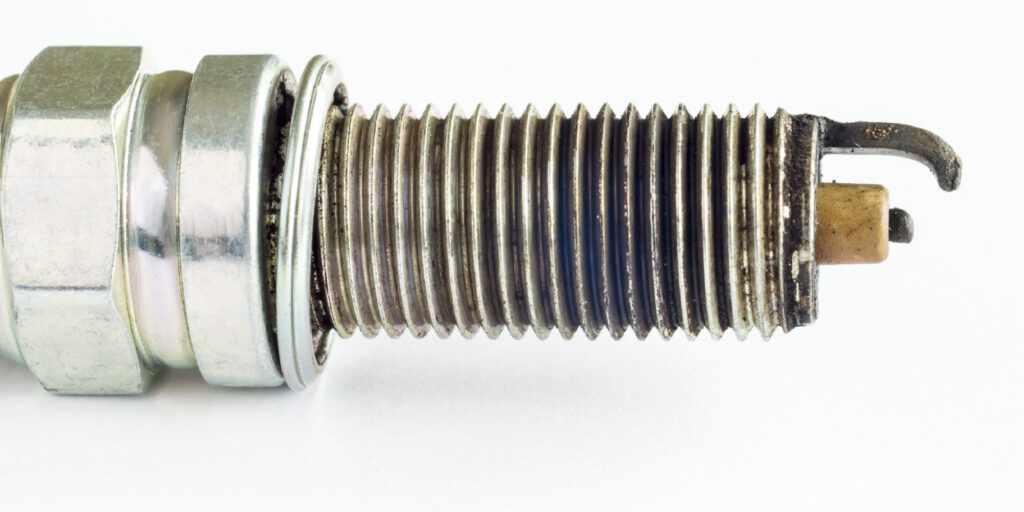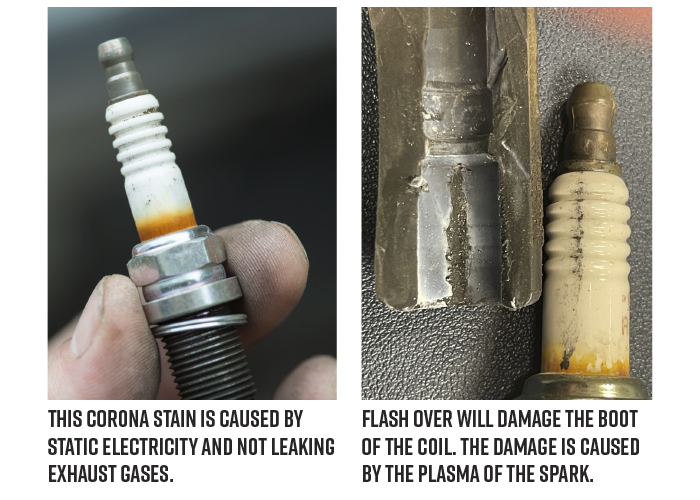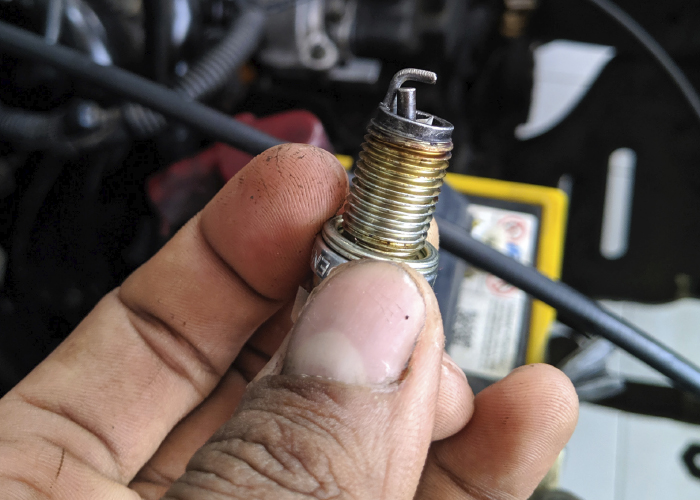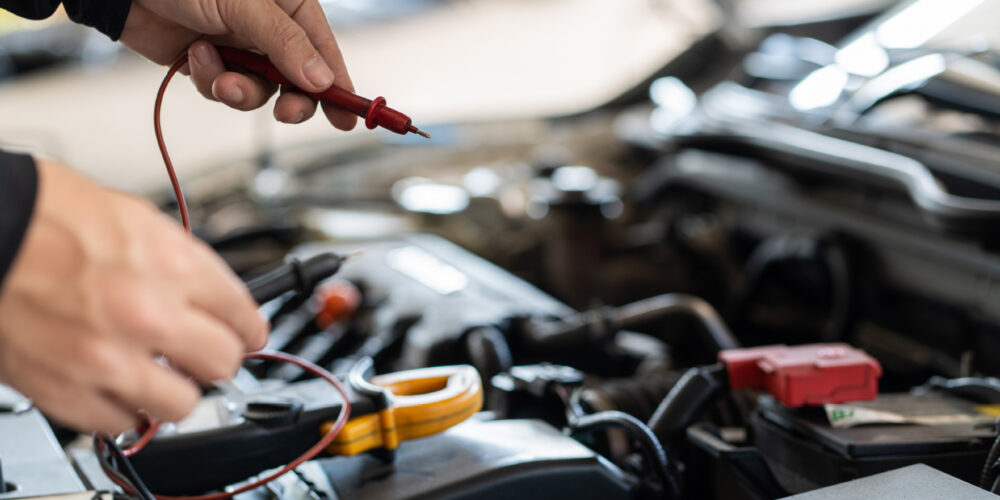The most common signs of ignition system neglect on any ignition system is carbon tracking or “flashover” on the spark plug insulator or on the tower of the coil. Carbon tracking is usually caused by oil, dirt or moisture creating a path to ground. A severely eroded spark plug electrode will increase firing voltages to the point that the spark will seek the path of least resistance, which is either through the spark plug boot, down the ceramic insulator or through the boot on the coil.
Issues with the fuel mixture being too rich or too lean can increase the resistance in the cylinder. The issue could also be found between the electrodes. The gap and the shape of the electrodes can increase the required voltage to create a spark. The combination of conditions can cause the spark to occur outside of the cylinder.
Spark plugs and boots used to be exposed in the engine bay on the sides of the cylinder heads. As high voltage traveled through the spark plug, it created static electricity. The charge caused pieces of dust and debris to stick to the exposed spark plug. It was normal for the attracted contaminants to make an orange or yellow ring called a corona stain. Most modern engines nestle the spark plugs between the camshafts deep in the head. But, the spark plugs are not totally protected from contaminants.
If a carbon track is found on a spark plug or coil tower, an identical track will be found inside the spark plug boot, as well. If the misfire has been ongoing, the boot could show signs of cracking. If the boot or wire set shows signs of flash over, the boots or wire set should be replaced along with the spark plugs. Failure to change the components together will result in the carbon track transferring from the old component to the new component over time. The problem may be temporarily solved by replacing the spark plugs or ignition wires, but after some driving the problem will be right back and the components will all have carbon tracking on them again. This is one reason why it is always important to replace all secondary ignition components at the same time.
It is also important to look at the seals in the valve cover that seal the spark plug tubes. If the well is filled with oil, it might prevent a comeback if you replace the seals and valve cover gasket. Sometimes, the issue could be a cracked valve cover.
The bottom line is that if you see carbon tracking or “flashover” on a spark plug, boot or coil, it is not normal. It is a sign that the spark is occurring outside of the cylinder. The two causes are contamination around the coil and spark plug, or increased resistance at the gap due to an ignition or fuel system problem. Both issues can be fixed by cleaning out the spark plug well, resealing it if required, and replacing the spark plug and ignition coil boots or ignition coil, where applicable.
















